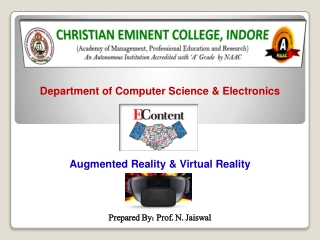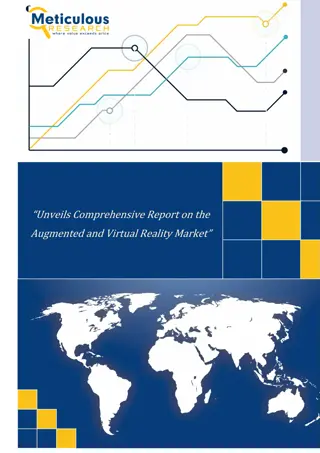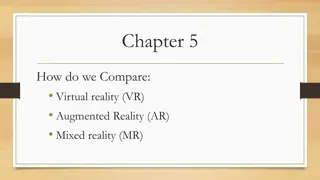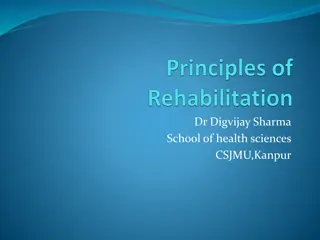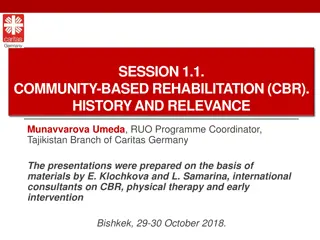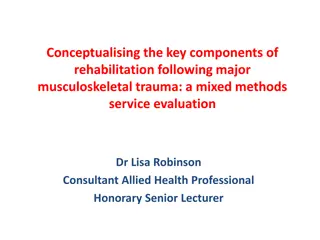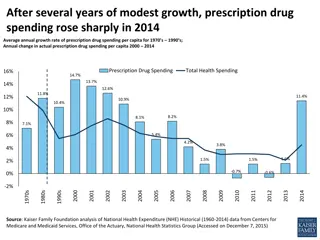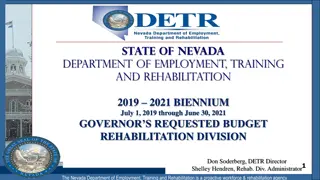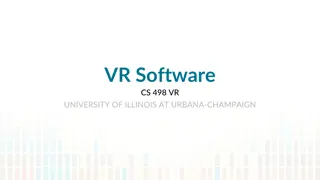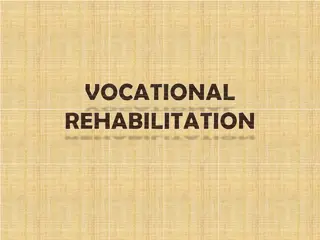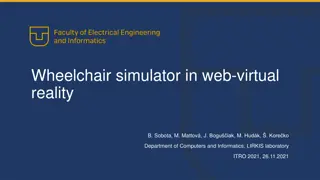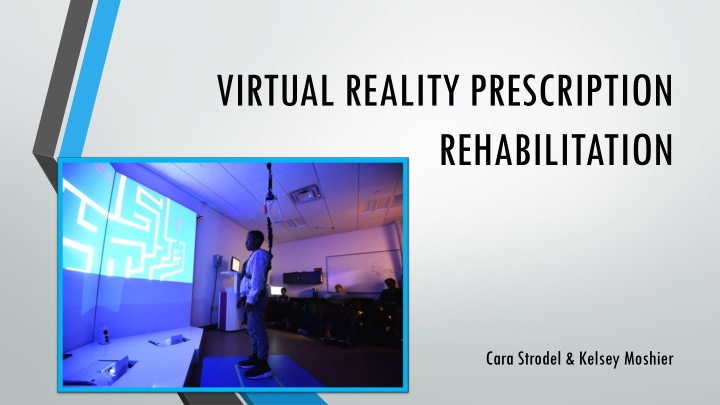
Virtual Reality Prescription Rehabilitation for Enhanced Physical Therapy
Discover how virtual reality (VR) is revolutionizing physical therapy by offering an interactive and motivating environment for patients. Explore its benefits in stroke recovery, arthritis management, joint replacement, and more. Learn from a case study on VR's effectiveness in movement rehabilitation after a stroke, showcasing significant improvements in motor skills.
Uploaded on | 0 Views
Download Presentation

Please find below an Image/Link to download the presentation.
The content on the website is provided AS IS for your information and personal use only. It may not be sold, licensed, or shared on other websites without obtaining consent from the author. If you encounter any issues during the download, it is possible that the publisher has removed the file from their server.
You are allowed to download the files provided on this website for personal or commercial use, subject to the condition that they are used lawfully. All files are the property of their respective owners.
The content on the website is provided AS IS for your information and personal use only. It may not be sold, licensed, or shared on other websites without obtaining consent from the author.
E N D
Presentation Transcript
VIRTUAL REALITY PRESCRIPTION REHABILITATION Cara Strodel & Kelsey Moshier
VIRTUAL REALITY Virtual reality works by implementing computer-based technology in order to stimulate the patient s senses to create an illusion of reality. It must incorporate a vast amount of technologies in order to achieve the goal of realism for the patient--which is an incorporation of perception and cognition.
USES IN PHYSICAL THERAPY Provides an interactive, motivating atmosphere where intensity and positive feedback can be controlled while retraining the movement Allows the patient to participate in experiences that are both pleasing and rewarding Patient and therapist are able to interact with a multisensory and dimension environment that is explored in real time
VIRTUAL REALITY AND PARKINSON S DISEASE https://youtu.be/hocvsEMnWrA
HIGHLY IMPACTED PATIENTS STROKE PHYSICAL THERAPY REGIMES THAT INCORPORATE VIRTUAL REALITY CAN OPTIMIZE AND ACCELERATE THE RECOVERY PROCESS ARTHRITIS AMPUTATION JOINT REPLACEMENT DISC DISEASE BONE INJURIES WHIPLASH OSTEOPOROSIS
CASE STUDY: MEET BOB Virtual reality and haptics as a training device for movement rehabilitation after stroke: A single-case study - Male in his fifties that experienced a R CVA affecting the left upper extremity - Pt performed twelve 90 minute sessions on a 3-D computer game during a 4 week time period - UE motor performance evaluated using: Purdue pegboard test, dynamometer hand-grip upper-extremity test Results - Improvements were found in fine manual dexterity, grip force, and motor control of the affected upper extremity. The subject reported that there was a change in his day-to-day use of the upper extremity and that he was able to use it in activities that were previously impossible for him strength,
WHY DID VR WORK? The virtual environment is a controlled environment Individuals can practice simple tasks or more complex tasks, and they can measure their success in real time Therapists are also able to track movements for analysis Important to incorporate haptic force feedback (sense of touch with objects) in order to engage sensory feedback necessary for grasp capability Haptic means interaction with a 3D environment created in a computer, which besides the visual impressions gives the user physical interaction, enabling him to touch the object in the virtual environment
RELEVANT RESEARCH ON VIRTUAL REALITY AND REHABILITATION Use of Virtual Reality for Adjunctive Treatment of Adult Burn Pain During Physical Therapy: A Controlled Study Ability of VR to distract patients during treatment 3 minutes of PT with no distraction compared to 3 minutes of PT with VR distraction Results: all patients reported less pain when distracted with VR, and the magnitude of pain reduction by VR was statistically significant Soldiers Receiving VR for Burn Therapy (https://www.youtube.com/watch?v=jNIqyyypojg) Motor rehabilitation using virtual reality
STAY UP TO DATE! Virtual reality is drastically changing and we must be able to properly incorporate this technique into our patient s exercise program EDUCATE YOUR PATIENT! Slowly introduce your patient to this specific technique. Fear can be associated with the use of virtual reality, especially if your patients aren t use to being so mobile INDIVIDUALIZE THE TREATMENT! Virtual reality allows you to specify the parameters of the exercise and change them to fit your patient s needs. Be aware of their abilities and their reaction to the program PHYSICAL THERAPIST ROLE
REFERENCES Agrawal, A. (n.d.). How Virtual Reality Will Change Physical Therapy Forever. Retrieved July 15, 2016, from http://www.inc.com/aj-agrawal/how-virtual-reality-will-change-physical-therapy-forever.html Merians, A. S., Jack, D., Boian, R., Tremaine, M., Burdea, G. C., Adamovich, S. V., Recce, M., & Poizner, H. (2002). Virtual Reality Augmented Rehabilitation for Patients Following Stroke. Physical Therapy, 82(9), 898-915. Accessed July 15, 2016. Retrieved from http://ptjournal.apta.org/content/82/9/898. Sveistrup, H. (2004). Motor rehabilitation using virtual reality. Journal of NeuroEngineering and Rehabilitation, 1, 10. http://doi.org/10.1186/1743-0003-1-10 Using virtual reality to advance physical therapy. (n.d.). Retrieved July 15, 2016, from http://phys.org/news/2016-06-virtual-reality-advance-physical-therapy.html What is Virtual Reality? - Virtual Reality. (2015). Retrieved July 15, 2016, from http://www.vrs.org.uk/virtual-reality/what-is-virtual-reality.html

